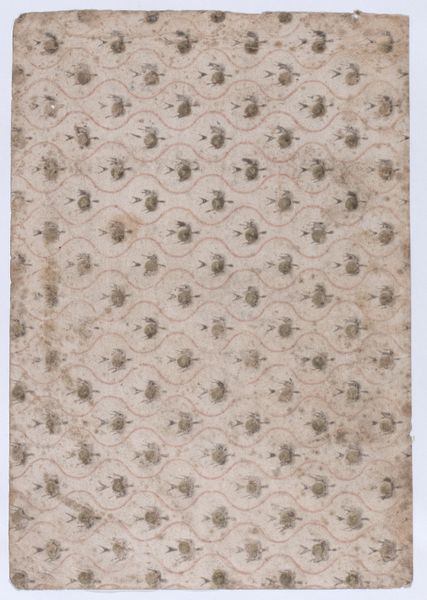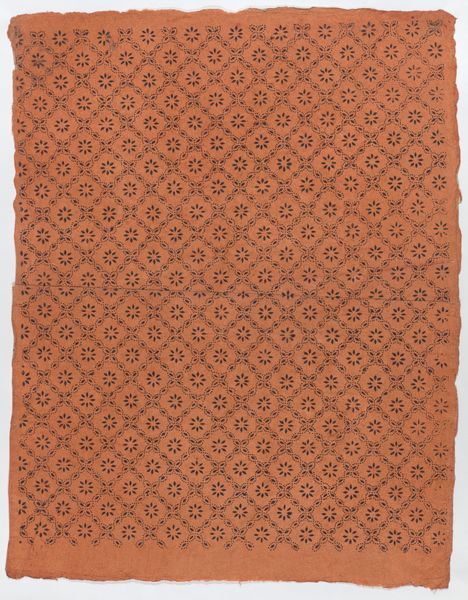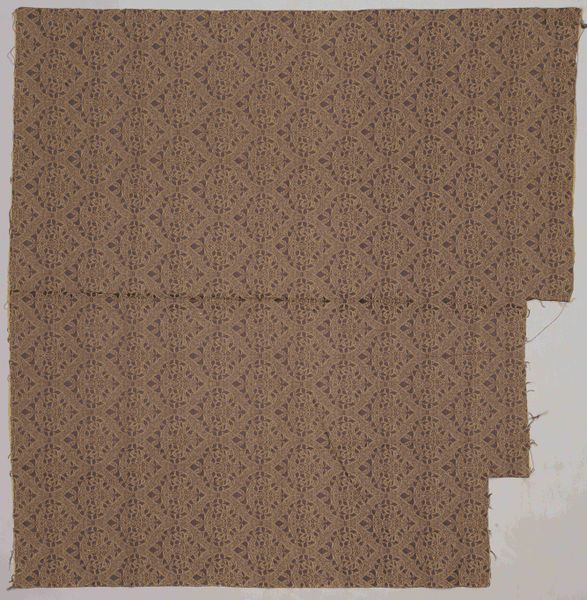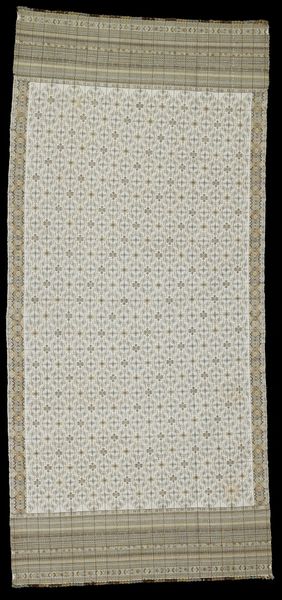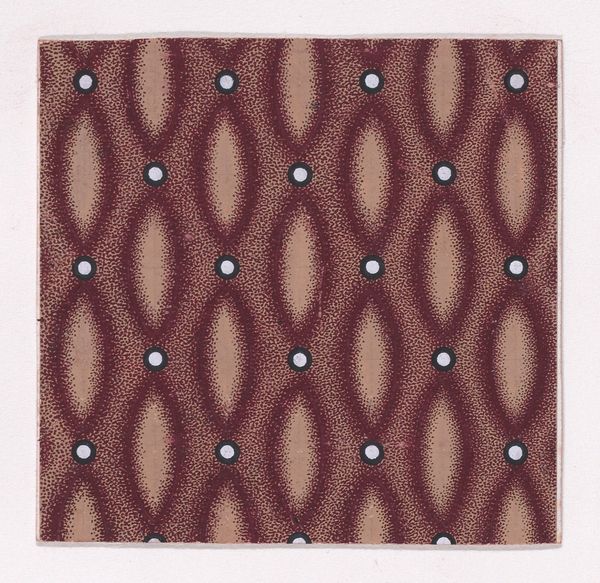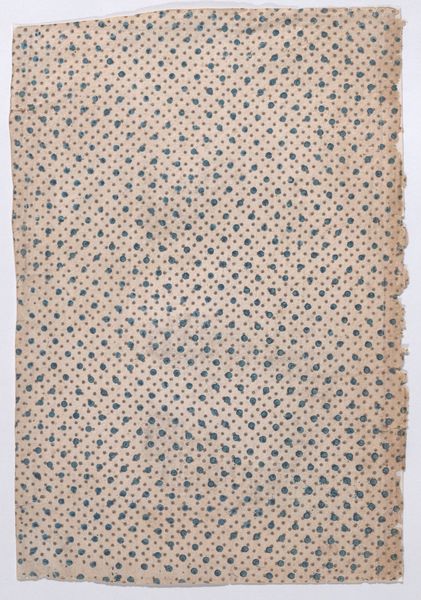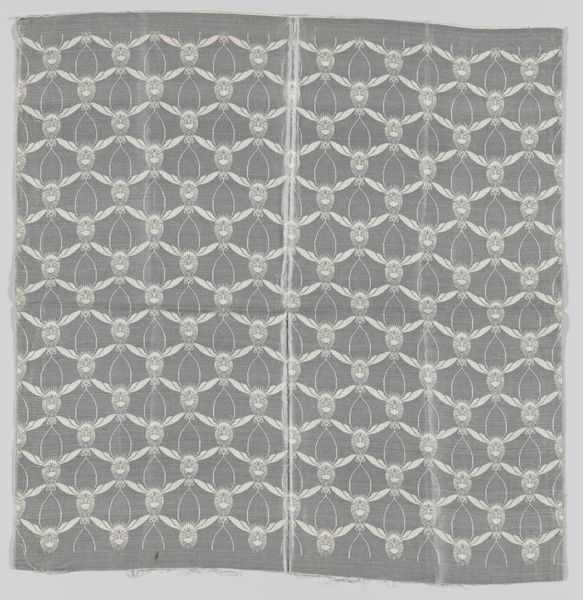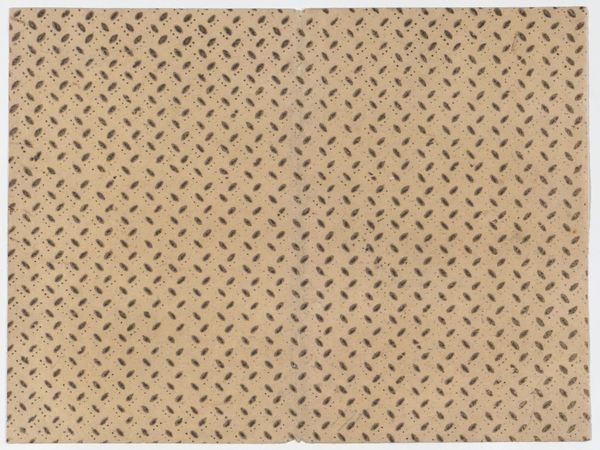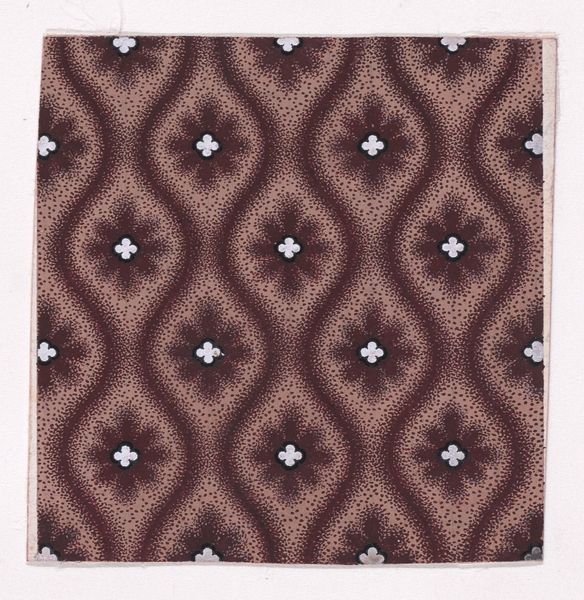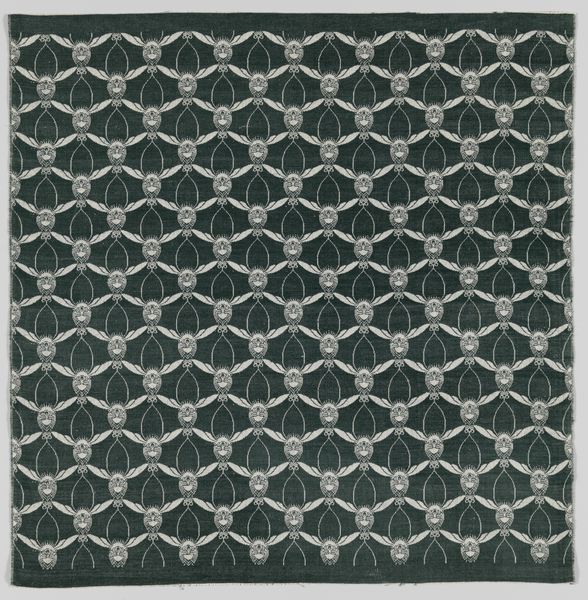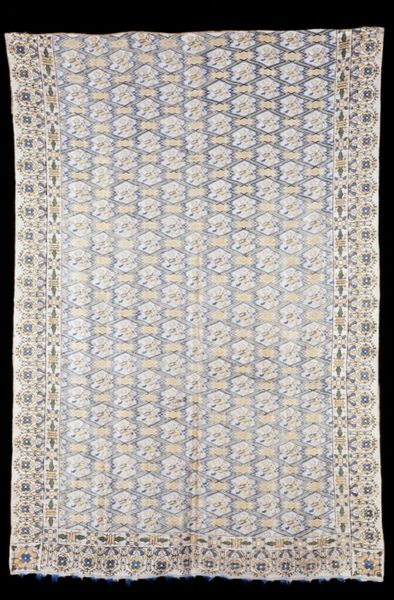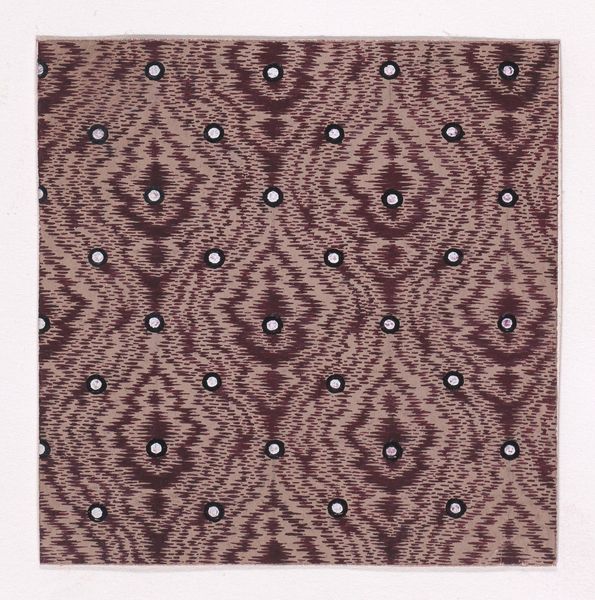
Staal bespanningsstof van linnendamast met dessin "Wilde Vlucht" 1911 - 1915
0:00
0:00
chrislebeau
Rijksmuseum
weaving, textile
#
natural stone pattern
#
art-nouveau
#
weaving
#
textile
#
repetitive shape and pattern
#
organic pattern
#
fabric design
#
repetition of pattern
#
vertical pattern
#
pattern repetition
#
textile design
#
decorative-art
#
imprinted textile
#
layered pattern
Dimensions: height 59.5 cm, width 58.2 cm
Copyright: Rijks Museum: Open Domain
Curator: Here we have "Staal bespanningsstof van linnendamast met dessin 'Wilde Vlucht'"—a linen damask textile piece from the Dutch artist Chris Lebeau, created between 1911 and 1915. It’s a study in repeating patterns. Editor: It’s quite striking, actually. At first glance, it has a certain hypnotic quality, with the seemingly endless repetition of this winged motif over a caramel backdrop. There's something almost ritualistic about the pattern. Curator: Lebeau was deeply involved in the Dutch Arts and Crafts movement. He saw decorative art as a way to uplift society. This piece, in particular, exemplifies his dedication to producing accessible art, bringing beauty into everyday life through functional objects. Editor: I'm intrigued by that idea of accessible art and functionality. Who did this piece serve and what sociopolitical context surrounded the textile production during that period? Were labor practices ethical or aligned with ideals of liberation? Curator: Those are crucial questions. During the early 20th century, discussions around labor exploitation in textile production were rising. It would be very insightful to explore if Lebeau addressed these social issues through his artistry or within his workshop practices. Editor: It's true, isn't it? Considering his dedication to accessibility, ignoring those labor issues seems counterintuitive. I keep thinking about how repetition functions here. Does the pattern serve to highlight industrial production? And what is it with that stylized insect motif? Curator: Well, given its name, "Wilde Vlucht", I believe these patterns represent stylized renditions of dragonflies or other winged insects caught in a sort of chaotic flight. Perhaps a representation of the vitality found in nature. Editor: So there's this implied wildness tempered through pattern and textile manufacture? It creates an interesting contradiction—artistic liberation hampered, perhaps, by historical forces? Curator: Precisely! By examining this artwork, and indeed all artworks, through multiple lenses of history, production and identity we achieve richer interpretations that can spark more meaningful conversation around art's social impact. Editor: Exactly. Considering Lebeau's artistic aims in conjunction with historical contexts can unveil profound social issues intertwined with craft. It has definitely shifted how I initially perceived this visually engaging textile.
Comments
No comments
Be the first to comment and join the conversation on the ultimate creative platform.
